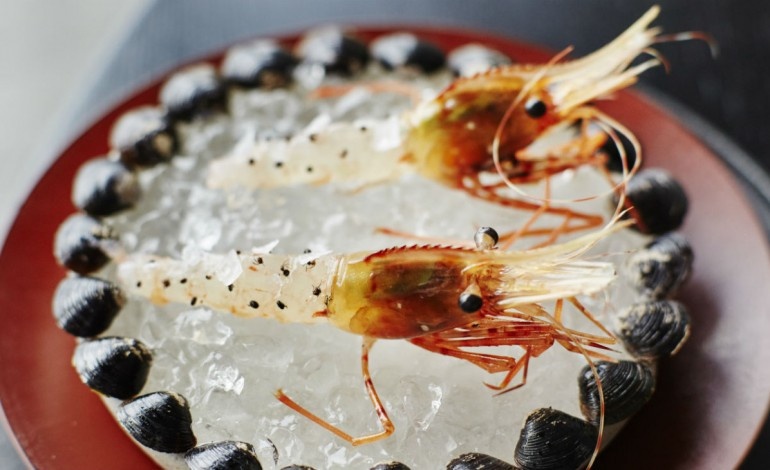I was in my twenties the first time I tried escargot. I thought I had truly broken all culinary barriers as I savored the garlic infused gastropod in the name of gastronomy. Thirty something years later I often find myself ordering the strangest things on menus around the world. There’s a reason that travel shows about food are among the most popular. Everyone knows how to eat and the world is full of interesting choices. How far are you willing to step out of your palate’s comfort zone?
Sitting in a beach bar in Nicaragua I noticed that sea cockroach ceviche was being offered as a specialty dish on the menu. Nothing with the word “roach” in it sounds very appetizing but yet I found myself extremely curious . After all, one never knows when a stranger might walk up to you on the street and ask you if you’ve ever tried sea cockroach, or worse, you find yourself writing an article about strange foods around the world and are at a complete loss because you never took a chance. How bad can it be? Worst case scenario, you spit it out. That’s my mantra. Somebody likes it or it wouldn’t still be on the menu.
I don’t know what was worse. The fact that sea cockroach ceviche wasn’t cooked, or that I made the mistake of googling images of the little crustacean before the dish arrived. It turns out that the animal looks like a roach regardless of the fact that it’s more of a crab than an insect. It wasn’t the worse thing that’s ever been in my mouth,I’ll admit, but the gummy texture didn’t help the experience. I gagged a few morsels down before pushing the plate to the other side of the table. Sometimes it’s better not to google what you’re eating until after the fact.
Asia is a cornucopia of culinary no-nos. In short, they will eat anything. Visit a snake restaurant and find out yourself. Venomous vipers slither around in the front window and you pick out one like you would a lobster.The chef cuts off it’s head, drains it’s blood into a cup, saute’s the snake with a little garlic and serves it with rice. What happens to the blood you ask? It’s mixed with a little alcohol and drunk as a shot. Sometimes the gall bladder is thrown in for luck. I must admit that python tastes better than cobra. Maybe it’s because it looks more like a steak and less like a poisonous snake. Maybe it’s because I didn’t witness the execution of the python.Vietnam sells bottles of liquor with a whole cobra coiled in the bottle. Drinking the liquor is supposed to be healthy. I’m more curious how they got the snake in the bottle.
Most large Chinese cities have a night market and that’s when the creepy-crawlies come out. In addition to the strange fish and rodents being sold as late night snacks, there’s skewers of live scorpions, sea horses and larva waiting to be served. Eating a scorpion might be the most challenging thing I’ve ever done. I’ve had scorpion rolls at a sushi restaurant, BUT they didn’t have REAL scorpions in them. For less than a dollar, the vendor will grab a stick with five or six live impaled scorpions and dip it in hot oil for a few moments until the insects stop squirming. Next, he hands the stick to you and you’re supposed to eat them. I’ll admit that it took me a few minutes to get the nerve to eat a fried scorpion, but in the end, peer pressure won out. What did they taste like? Exactly like pork rinds. Pork rinds with little legs and stingers….Ewww.
African lodges often serve exotic game and offer an opportunity to savor animals that you thought only belonged in National Geographic videos. Ostrich is delicious. You might assume that it tastes like a giant turkey, but you’d be wrong. The meat is red, very lean and has nothing in common with poultry. To confuse things even more, zebra meat is white. Warthog tastes like pig and crocodile can be a little tough with a slight fishy taste. Africans have perfected the process of making jerky, called biltong in South Africa, and you’ll find varieties of gemsbok, impala, kudu and almost every other African antelope packaged and ready to go for your next safari.
Even Scandinavia has it’s share of bizarre food choices. The best restaurant in the world for 3 consecutive years is called Noma and is famous for serving live ants. These insects are actually used as a seasoning on the restaurant’s signature steak tartare or the “almost live” shrimp dish which is served with the shrimp so “fresh”, it’s still twitching. The ants are quite alive until you swallow them and supposedly have a nice crunch to them. Fermented fish is a popular choice throughout Sweden and Norway. In Iceland, Greenland shark is served after rotting and being hung to dry for months . It’s poisonous otherwise. The decomposing and fermentation process brings out a strong ammonia and fishy flavor that’s very challenging for those unaccustomed to the taste. Maybe that why eating these bite sized cubes are often associated with hardiness and strength (as well as sudden nausea). Ever seen a puffin? They’re cute little birds that kind of resemble penguins. Mmmmmmmm! Delicious! They’re on the menu too. Whales are endangered elsewhere, but it’s easy to grab a whale steak in Iceland. What does it taste like? I thought it tasted like liver and I could go the rest of my life without repeating the experience. Even Rudolph isn’t safe in Scandinavia. Reindeer burgers are available from Iceland to Finland. Ever wanted to try bear? Neighboring Estonia sells it by the can.
In a few months I’ll be visiting Sardinia and I have to make a difficult food choice. Should I try the Casu Marzu or not? This sheep milk based cheese is fermented by deliberately introducing maggots that digest the cheese and break it down into a softer state with traces of an oozing liquid called lagrima. These maggots are translucent (ewww! x 2) and can jump 6 inches if startled. Some Sardinians remove them before the cheese is served. Others, just eat the whole thing, jumping larvae and all. I haven’t seen it yet, but it sounds worse than the deep fried crickets in Thailand. In my opinion, there’s not much that’s worse than eating a maggot and cheese excrement. However, can 1.5 million Sardinians be wrong? Keep reading my articles and I’ll let you know in a few months.






Leave a reply
You must be logged in to post a comment.